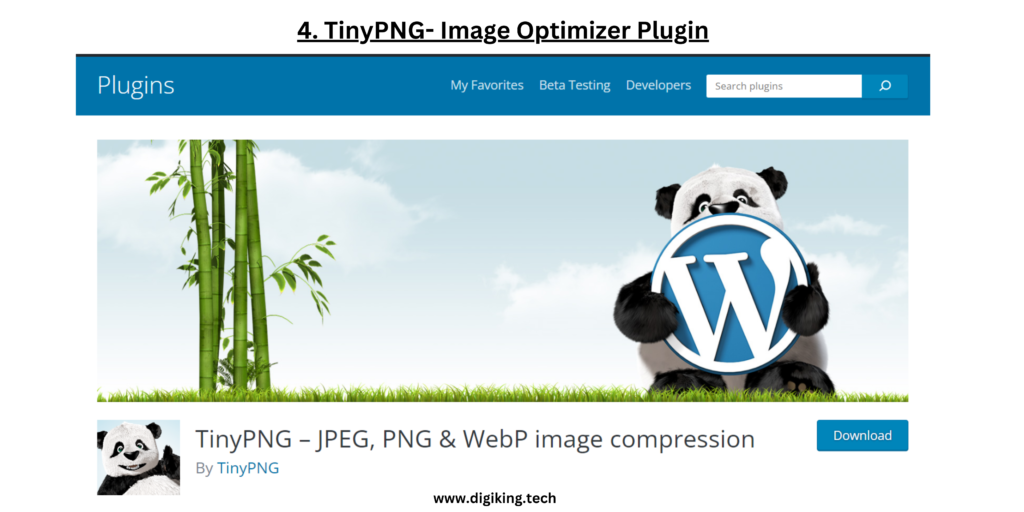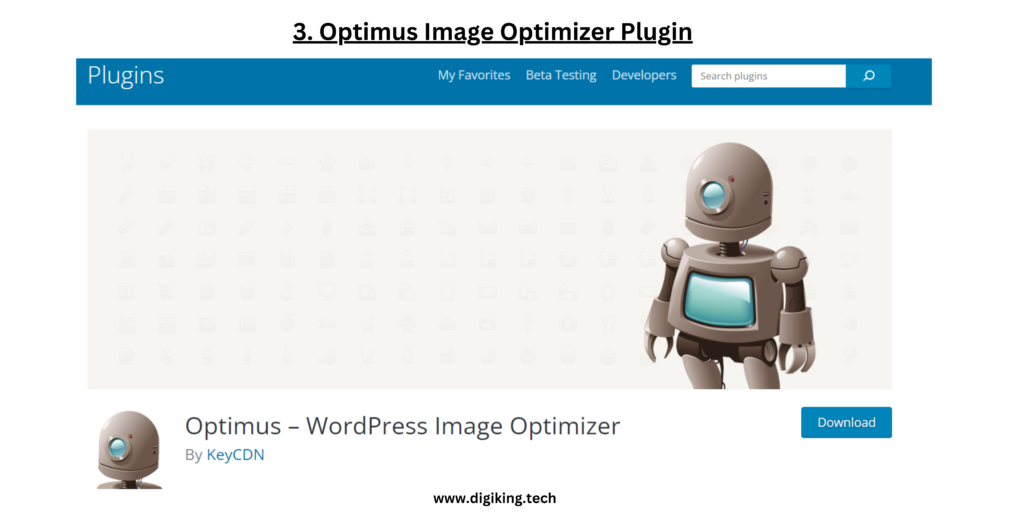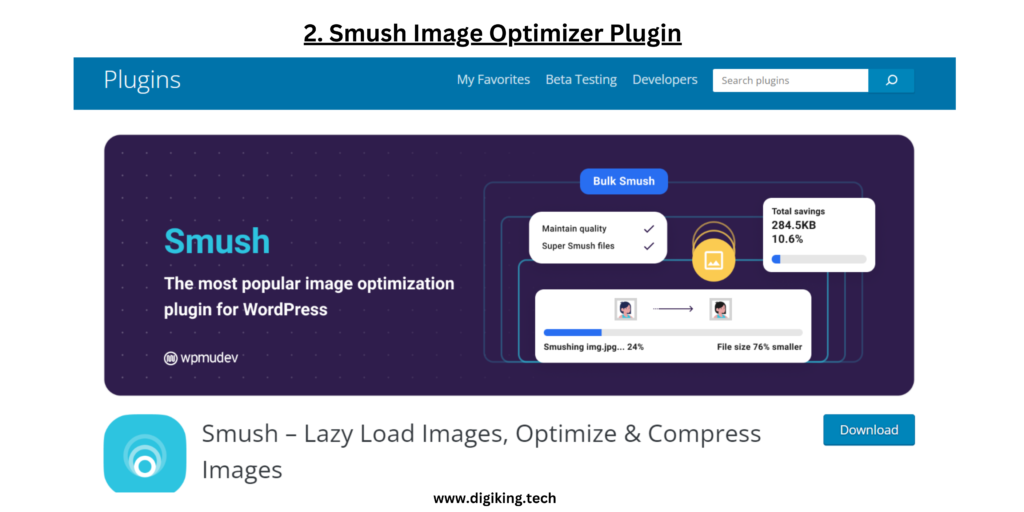They are more important in internet material in the digital era. It is critical for increasing website performance, user experience, and search engine results, whether you run a blog, an e-commerce store, or a company website. This article will guide you through the best practices.
The practice of lowering picture file sizes while retaining image quality in order to improve website speed and load times. With the increase of visual content and its influence on user engagement, search engines have begun to favor websites that provide a streamlined and aesthetically pleasing experience. You can guarantee that its information loads quickly by optimizing website’s pictures, attracting visitors from the minute they land on your page:
They not only improve the aesthetic attractiveness of your web sites, but they also communicate important information and emotions to your readers. Large, unoptimized photos, on the other hand, can dramatically slow down your website’s loading time, thus impacting the user experience and search engine results:
By putting your photos on CDN (Content Delivery Network) servers, you can distribute them to users from the nearest server, lowering latency and boosting loading speeds even more.
Optimize your JPEG, PNG, and WebP pictures to make your website load quicker. This plugin optimizes all of your photos automatically by connecting with the popular image compression providers TinyJPG and TinyPNG:


Size reductions of up to 70% are achievable, depending on the image and format. Several kilobytes can be saved for each image; these savings help the blog page function better. What’s most amazing about the compression technology is that the visual quality is preserved.
Pictures Optimized, enable lazy loading, resize, compress, and enhance Google Page Speed with the highly powerful and completely free WordPress image smusher, offered to you by the WPMU DEV superteam!
Smush will compress photos without sacrificing quality.
Image optimization is the simplest approach to making your website load quickly!

It typically make up an important portion of a website’s data. Picture optimization improves image quality, decreases loading times, and minimizes the strain on network resources, particularly mobile data consumption.
Image Compressor or optimizer will help improve your SEO performance because search engines take page loading time into account when ranking websites. More page visits, a better user experience, and higher search results all result from a quicker-loaded website.
Short Pixel is an image optimization service that employs superior compression technology to minimize picture size without compromising quality, allowing your websites to load quicker.
One such effective approach Optimize Images is that may have a big influence on the SEO performance and overall user experience of your website. In this thorough tutorial, we will go into the finest exercises optimization for the web, providing the information and skills you need to outrank your competition on Google and other search engines:
Before we get into the tasks, let’s first understand why image optimization is so important for the success of your website. Google and other search engines place a great value on the user experience, which includes the loading speed of your web pages. Slow-loading sites might result in higher bounce rates, which can harm your search engine results.
You may minimize picture file sizes without sacrificing quality by optimizing your photographs, resulting in quicker website load times. This faster loading time improves the user experience, which search engines reward with higher ranks. So, let’s get started on the workouts that will assist you in attaining these objectives.
The format of a picture is very important in image optimization. Understanding when to use each format may have a major influence on the performance of your website.
JPEG: This format is suitable for photos and pictures with a variety of colors. It employs lossy compression, which means that it decreases file size at the expense of some picture quality. The decrease, however, is frequently invisible to the human eye, making it a good choice for optimizing larger photographs.
PNG: It is the ideal format for pictures that require transparency or have a limited color palette. For icons, logos, and graphics that require a translucent backdrop.
Large photos might cause your website to load slowly. To avoid this, photos must be suitably resized and scaled. Using photos with dimensions that correspond to your website’s display requirements can significantly reduce file size and load times.
Modern content management systems (CMS) frequently include picture resizing functions that may automatically generate multiple image sizes. Pick these capabilities to create thumbnails, small, medium, and large copies of each image, and then pick the right size for the situation.
Image compression is an important part of image optimisation. It entails shrinking picture file sizes without sacrificing image quality. Here are some efficient compression methods:
Lossless Compression: Use lossless compression technologies like TinyPNG or ImageOptim for pictures that require pixel-perfect quality. These programmes will compress the image while maintaining its quality.
Lossy Compression: If you’re willing to give up a little image quality, lossy compression applications like JPEG Optimizer or Image Recycle can yield significant file size reductions. Be careful not to over-compress, since this might cause visible artefacts.
It is a method of deferring the loading of off-screen pictures until the user scrolls close to them. Lazy loading may dramatically improve initial page load speeds by loading just the pictures visible to the user.
Lazy loading on your website is made simple by popular JavaScript utilities such as LazyLoad and the Intersection Observer API. Using this strategy, you may increase the performance of your website and give a more seamless user experience, which search engines greatly value.
It’s critical to provide informative alt text for your photos for accessibility and SEO. Alt text assists visually challenged viewers in understanding the image’s content, and it also supplies search engines with useful information about the image’s context.
When crafting alt text, be descriptive and use relevant keywords sparingly. Maintain a succinct yet informative tone, delivering the substance of the image in a few words.
Image sitemaps are XML files that give more information about the photos on your website to search engines. You can help Google Search Console and other search engines identify and index your photographs more efficiently by generating and submitting an image sitemap.
Make sure your picture sitemap has important information like image location, title, description, license information, and related metadata. This allows search engines to display your photographs in image search results, resulting in more organic traffic to your website.
Content Delivery Networks (CDNs) may dramatically improve the speed with which your photos load. CDNs store your website’s pictures on numerous servers across the world, providing quicker delivery to users no matter where they are.
When a user requests an image, the CDN sends it from the nearest server, minimizing latency and load times. Popular CDNs such as Cloudflare and Akamai are ideal candidates for picture delivery optimization.
Image SEO optimization is a critical component of your website’s overall search engine rankings. You may dramatically boost your website’s exposure in search engine results by using the correct file formats, compressing photos for faster download, adding keyword-rich alt text, and focusing on responsive design.
Remember that image optimization is only one aspect of SEO. Pair picture optimization with other critical SEO practices, such as high-quality content production, link building, and website structure optimization, to gain the greatest results.